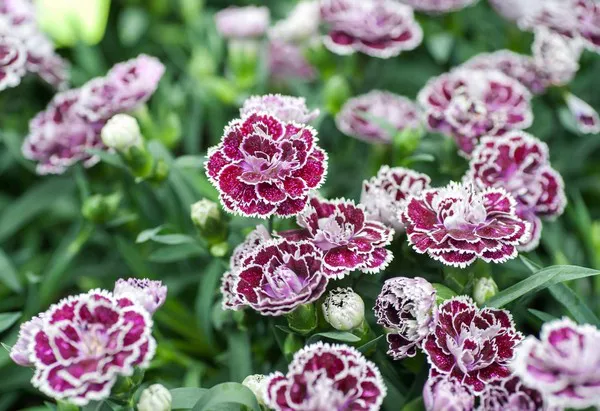Flowers bring joy, beauty, and a touch of nature into our lives. Whether received as a gift or chosen from the garden, we all want our floral arrangements to last as long as possible. While the lifespan of cut flowers is inherently limited, there are several techniques and practices that can help extend their longevity. By providing the right care, handling, and environmental conditions, you can enjoy the beauty and freshness of your flowers for an extended period. In this article, we will explore effective strategies for making flowers last longer, from proper preparation and hydration to essential maintenance and display tips.
Preparing Flowers for Longevity
Proper preparation is key to maximizing the lifespan of cut flowers. Here are essential steps to follow:
Trimming Stems: Begin by trimming the stems of your flowers. Use a sharp, clean pair of gardening shears or scissors to make a diagonal cut about an inch or two above the bottom of each stem. This allows for better water absorption.
Removing Foliage: Remove any leaves or foliage that will be submerged in water. These submerged leaves can decay, promoting bacterial growth and shortening the life of the flowers.
Water Temperature: Fill a clean vase with lukewarm water, ideally around 100°F (37°C). Warm water helps to stimulate water uptake and keeps the flowers hydrated. Avoid using hot or cold water, as extremes in temperature can shock the flowers.
Flower Food: If provided, add the packet of flower preservative that often comes with store-bought bouquets. These preservatives contain nutrients and antimicrobial agents that can prolong the life of the flowers. If no preservative is available, you can create a homemade solution by combining one teaspoon of sugar and a few drops of bleach or lemon juice per quart of water.
Proper Hydration for Flowers
Water is vital for maintaining the freshness and vitality of cut flowers. Follow these guidelines to ensure proper hydration:
Change the Water Regularly: Every two to three days, change the water in the vase. Discard the old water, rinse the vase, and refill it with fresh, lukewarm water. This helps to prevent bacterial growth and keeps the flowers hydrated.
Trim Stems Periodically: Trim the stems of your flowers every few days, making fresh diagonal cuts. This allows the stems to continue absorbing water effectively.
Remove Wilting Flowers: As individual flowers begin to wilt or fade, promptly remove them from the arrangement. Wilting flowers release ethylene gas, which can accelerate the aging process of other blooms. Removing them helps maintain the overall freshness of the arrangement.
Optimal Environmental Conditions
The environment in which your flowers are placed greatly affects their longevity. Consider the following factors:
Temperature: Keep your flowers in a cool area, away from direct sunlight, heating vents, or appliances that generate heat. High temperatures accelerate the wilting process, while cooler temperatures help preserve the freshness of the blooms.
Avoid Drafts and Ripening Fruit: Place your floral arrangement away from drafts or areas with rapid air circulation. Drafts can cause flowers to dehydrate quickly. Additionally, keep flowers away from ripening fruits, as fruits emit ethylene gas, which can hasten the aging of flowers.
Humidity: Flowers generally thrive in moderate humidity levels. Consider using a humidifier or placing a container of water nearby to increase humidity in dry environments, especially during winter months when indoor heating reduces humidity levels.
Display and Maintenance Tips
Proper display and maintenance practices contribute to the longevity of cut flowers. Follow these tips:
Choosing the Right Location: Display your flowers in a location that provides good air circulation and minimal exposure to direct sunlight. Avoid placing them near appliances or areas prone to temperature fluctuations.
Avoid Ethylene Sources: Keep your flowers away from sources of ethylene gas, such as ripening fruits, as mentioned earlier. Ethylene accelerates the aging process of flowers and can lead to premature wilting.
Mist Flowers: Lightly mist the petals of your flowers with water using a clean spray bottle. This can help hydrate the blooms and provide a refreshing environment.
Avoid Overcrowding: If displaying multiple arrangements, make sure they are not overcrowded. Overcrowding can impede air circulation and promote the growth of bacteria, reducing the lifespan of the flowers.
Avoid Contaminants: Ensure that your vase, container, or floral foam is clean and free from any residue or contaminants that can promote bacterial growth. Regularly rinse and clean your vases to maintain optimal hygiene.
Be Mindful of Flower Compatibility: If combining different types of flowers in one arrangement, consider their individual needs and compatibility. Some flowers release substances that are harmful to others. Research the specific flowers in your arrangement to ensure they are compatible and won’t harm each other.
Avoid Touching the Blooms: Handle the flowers and their petals with care to avoid bruising or damaging them. Touching the blooms frequently can also transfer oils and bacteria from your hands, potentially shortening their lifespan.
Conclusion
With proper care and attention, you can extend the life of your cut flowers and enjoy their beauty for a longer duration. From initial preparation and hydration to optimal environmental conditions and display practices, these techniques will help you make the most of your floral arrangements. Remember to provide adequate hydration, maintain cleanliness, and create a favorable environment that minimizes stress and promotes the longevity of your flowers. By implementing these strategies, you can savor the enchanting beauty and fragrance of your flowers, adding a touch of nature’s elegance to your living space.


